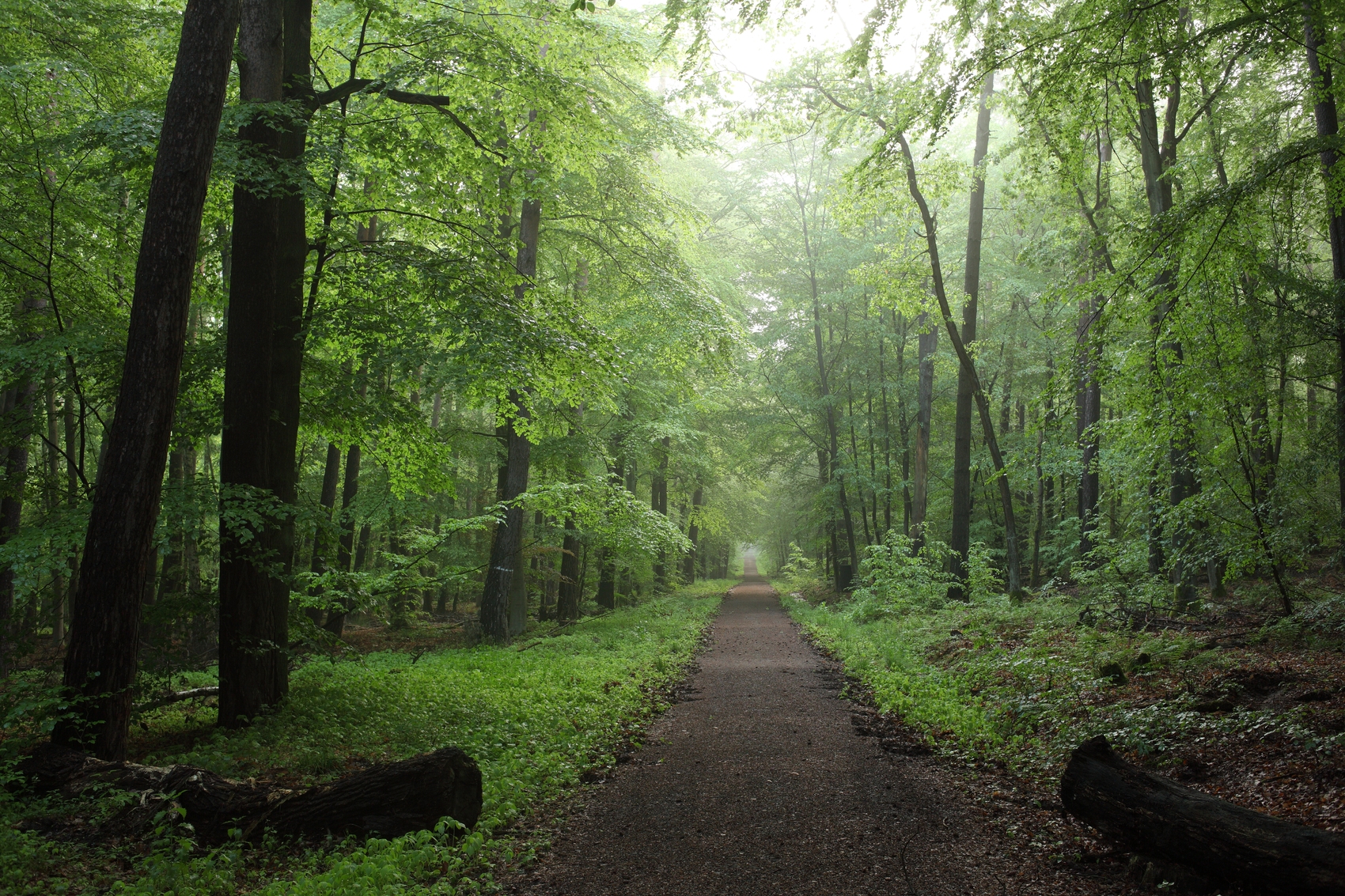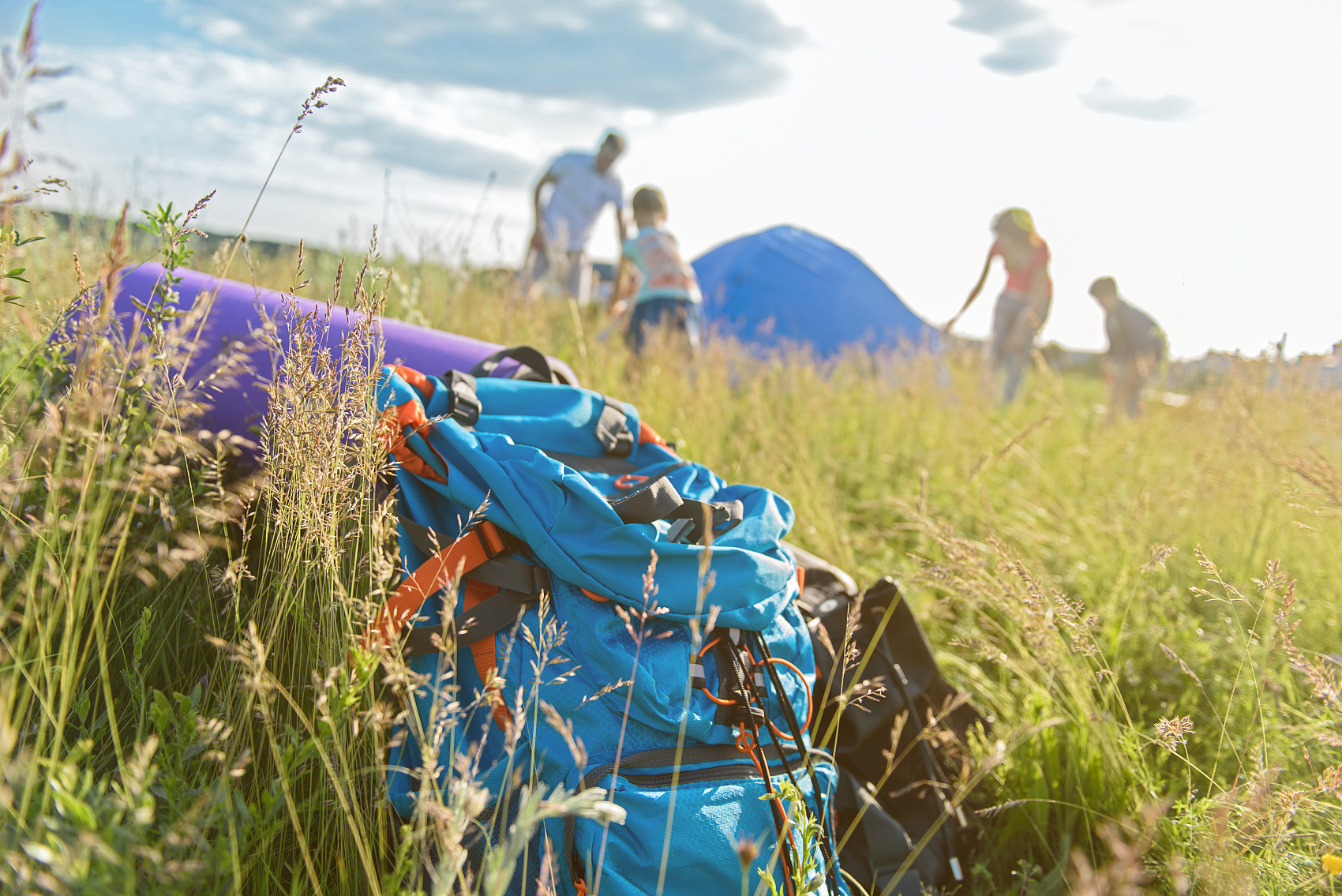1.Nature Deficit Disorder: The Growth Dilemma of Modern Children
1) Invisible Deprivation of Children by Urban Life
Today, with the rapid development of urbanization, our children are living in a world built of steel and concrete. With tall buildings and busy traffic, the seemingly prosperous and convenient urban life has quietly caused an invisible deprivation for children’s growth. Children who have been in air-conditioned rooms for a long time are like flowers protected in a greenhouse, away from the natural temperature changes in the outside world. They are used to a constant and comfortable room temperature, but rarely have the opportunity to feel the heat under the scorching sun in summer or the chill in the cold wind in winter, and their tactile perception has gradually become dull. Electronic screens have become a frequent visitor in children’s lives. The colorful pictures and endless games on TVs, computers, and tablets attract children’s attention. Children spend a lot of time immersed in them, and their hearing is more filled with electronic sound effects, such as the crisp chirping of birds, the rustling of leaves in the wind, and the sound of raindrops falling. These sounds of nature are gradually forgotten by them, and their auditory perception is gradually degenerating in this environment.
2) The irreplaceable nature of natural experience
When children step into the world of camping, it is as if they have opened a brand new door to life education. During the camping process, they can observe the wonderful process of insect metamorphosis up close. They can witness with their own eyes how a small caterpillar, after a long period of hibernation, breaks out of its cocoon and becomes a butterfly, spreading its gorgeous wings and flying into the sky. This miracle of life is far more vivid and shocking than any text description in a biology textbook, and can leave a deep impression in the hearts of children, allowing them to truly feel the tenacity and beauty of life.
Camping also provides children with rich multi-dimensional sensory stimulation. In the morning, when children get up early and step on the grass barefoot, they can clearly feel the coolness and moisture of the dew, which is a delicate and unique tactile experience; leaning over and sniffing, the fragrance of the soil, mixed with the fragrance of grass and wild flowers, instantly refreshes the heart, which is a feast for the sense of smell; at night, lying on the open grass, looking up at the starry sky, the stars twinkle in the vast universe, and the shocking visual impact makes the children deeply feel their own insignificance and the grandeur of the universe. These fresh sensory stimulations from nature together constitute a complete natural cognitive system, allowing children to establish a full range of connections with nature, which is a valuable experience that is difficult to obtain in urban life.
2.Camping education: six core competences training
1) Practical classroom of survival skills
Camping is a natural survival skills practice classroom, providing children with valuable opportunities to learn and exercise in a real environment. During camping, setting up a tent is one of the first challenges that children have to face. This seemingly simple task actually contains rich spatial thinking training. Children need to carefully observe the structure and instructions of the tent, think about how to assemble the various parts correctly, and determine the best position of the tent on the ground. They need to consider factors such as wind direction and terrain to ensure that the tent can be built firmly while ensuring the rational use of the internal space. In this process, children’s spatial imagination, logical thinking ability and hands-on practical ability have been fully exercised. They have learned how to transform abstract spatial concepts into practical operations, which will greatly help them understand spatial geometry knowledge in the future learning of subjects such as mathematics and physics.
Fire source management is also an indispensable and important part of camping, and it plays a key role in cultivating children’s safety awareness. When making a fire to cook or keep warm in the wild, children need to understand the characteristics and use of different fire sources, learn to use lighters, matches and other ignition tools correctly, and master the skills of making fire, such as how to choose the right kindling and how to control the fire. At the same time, they must understand the serious consequences of improper fire source management, such as forest fires, which will not only cause devastating damage to the natural environment, but also threaten the safety of life and property. Through personal experience and practice, children can deeply understand the importance of safe use of fire sources, so that they can always be vigilant in daily life and avoid fire accidents caused by negligence.
Finding water sources outdoors and purifying them is a challenging and interesting scientific exploration journey. Children should learn to observe the natural environment and find places where water sources may exist, such as rivers, lakes, mountain springs, etc. After finding the water source, they also need to understand various methods of purifying water, such as using filtration devices, boiling, etc., and understand the scientific principles behind these methods, that is, how to remove impurities, microorganisms and harmful substances in water to obtain safe and drinkable water. This process not only allows children to master practical survival skills, but also stimulates their strong interest in scientific knowledge, cultivates their scientific thinking and spirit of exploration, and allows them to learn to use scientific methods to solve practical problems.
2) Forging Field of Adversity Quotient
The camping process is full of various uncertainties and challenges, and these are excellent opportunities to forge children’s adversity quotient. Sudden weather changes are common emergencies during camping. It was sunny just now, but it may be cloudy and stormy in a blink of an eye. In the face of such weather changes, children need to react quickly and show strong adaptability. They need to learn how to protect themselves and their companions from bad weather, such as finding shelter in time, reinforcing the tent, and ensuring that the items in the tent are not wet by rain. At the same time, they also need to adjust their mentality, not be frightened by sudden changes, stay calm and optimistic, and actively deal with difficulties. This experience will enable children to remain calm and respond calmly to various emergencies in their future lives.
In addition to sudden weather changes, camping may also encounter various other emergencies, such as getting lost, losing items, etc. When these situations occur, children need to make correct decisions in a short time, which is a great test of their decision-making ability. Taking getting lost as an example, children must first remain calm and not panic. They need to recall the routes they have taken before, observe the surrounding environment, look for landmark objects, and try to determine their location. If they cannot determine the direction, they must learn to use tools such as maps and compasses to identify the direction, or look for nearby residents or staff for help. In this process, children need to consider various factors, weigh the pros and cons, and make the most reasonable decision, which will help them to make quick and accurate judgments and choices when facing complex problems in the future life.
Camping is usually a team activity, which requires children to work closely with their peers to solve problems together. In the process of teamwork, communication skills are crucial. When encountering difficulties, children need to express their ideas and suggestions clearly and accurately, listen to the opinions and ideas of others, and discuss solutions together. For example, when setting up a tent, some children are responsible for propping up the tent, some are responsible for fixing the ground nails, and some are responsible for sorting out the internal items. Everyone needs to cooperate and coordinate with each other to complete the task efficiently. In this process, if communication is not smooth, it may lead to slow progress of the task or even errors. Through camping activities, children can learn how to communicate effectively with others and improve their teamwork ability, which will have a positive impact on their future study and work, enabling them to better play their role in the team and achieve goals with others.
3) Enlightenment base for ecological awareness
In the camping site, garbage classification is no longer theoretical knowledge in books, but a real life practice. Children need to sort different types of garbage. Recyclable garbage such as waste paper, plastic bottles, metal products, etc. should be placed in corresponding recycling containers; hazardous garbage such as batteries, expired medicines, and waste light bulbs need special treatment; kitchen waste and other garbage should also be classified separately. Through hands-on operation, children can more intuitively understand the importance of garbage classification, understand the treatment methods of different garbage, and the positive significance of garbage classification for environmental protection. This field exercise can enable children to develop good garbage classification habits and integrate environmental awareness into every detail of daily life. Whether at the campsite or back home, they can consciously sort garbage and contribute their own efforts to protecting the environment.
3.Opportunity for reconstruction of parent-child relationship
1) Golden time of undisturbed companionship
In daily urban life, the fast-paced work and study, and the interference of various electronic products make effective communication between parents and children more and more difficult. However, camping provides a rare golden time of undisturbed companionship for the improvement of parent-child relationship. A parent-child organization once conducted an interesting “48-hour offline experiment” to follow up on families participating in camping. The results show that during the camping period, the average daily effective communication time of these families increased by 300%. In the camping site, away from the hustle and bustle of the city and electronic devices, parents and children get rid of the daily busyness and distractions and have more time to focus on each other. They strolled together on the mountain trails, sharing the beautiful scenery and inner feelings along the way; sitting around the campfire, talking about the fun things and dreams in life, this kind of wholehearted communication made the relationship between parents and children closer.
Camping also creates a new paradigm of equal cooperation between parents and children, breaking the traditional family role framework. During the camping process, parents and children complete various survival tasks together, such as setting up tents, finding ingredients, and preparing food. These tasks require everyone to work together to overcome difficulties. Each family member plays an important role, and there is no longer an absolute leader in the traditional sense. For example, when setting up a tent, parents may have more advantages in physical strength and experience, but children can also actively participate in it, helping to pass tools and tidy up the inside of the tent. In the process of looking for ingredients, children’s curiosity and keen observation may discover some wild vegetables or fruits that adults ignore. This process of equal cooperation makes children feel that they are an indispensable member of the family, enhances their sense of responsibility and self-confidence, and allows parents to better understand their children’s ideas and abilities, promoting the harmonious development of parent-child relationships.
2) New scenarios for intergenerational knowledge transfer
Camping has opened up a new scenario for intergenerational knowledge transfer, allowing traditional survival wisdom to be interpreted in modern society. In the wild, parents can pass on the traditional survival skills they learned when they were young to their children, such as how to identify directions, how to use natural materials to make simple tools, how to find water and food, etc. Although these skills may not be commonly used in modern technologically advanced urban life, they are basic skills for human survival and contain rich wisdom. Through practical operations and personal experience, children can better understand and master these traditional survival wisdom and feel the valuable experience accumulated by their ancestors in the process of getting along with nature.
In the process of camping, there is also an interesting phenomenon – reverse teaching of life skills. With the development of the times, children are exposed to more new things and new technologies, and in some aspects, their knowledge and skills even exceed those of their parents. For example, when using some high-tech camping equipment, children may be more handy than their parents. They can teach parents how to use smart watches to record trips, how to find information about campsites through mobile phone applications, how to use drones to shoot beautiful scenery, etc. This reverse teaching of life skills not only allows children to experience a sense of accomplishment, but also allows parents to see their children’s growth and progress, enhances mutual respect and understanding between parents and children, and further deepens the parent-child relationship.
4.The underlying construction of future competitiveness
1) The original stimulation of creativity
Camping provides children with an open creative space full of natural elements, where the sparks of creativity can burst out wantonly. At the campsite, children can use the natural materials around them, such as branches, leaves, stones, etc., to create unrestrainedly. They can use branches to build their own cabins, use their imagination to design the shape, structure and layout of the cabins, and think about how to make the cabins more stable and comfortable. This process not only exercises children’s hands-on ability, but also cultivates their spatial thinking and creativity. Painting with stones is also one of the children’s favorite creative activities. They can use their imagination to draw various vivid and interesting patterns on the stones according to the shape and texture of the stones, such as cute animals, beautiful flowers, mysterious universe, etc. The boundless combination of these natural elements frees children from the constraints of traditional creative materials and forms, and inspires their inner creativity.
During camping, children will also face various situational problems that need to be solved with innovative thinking. For example, when they want to build a simple fishing platform by the river, there are no ready-made tools and materials, which requires them to use their brains to think about how to use the natural materials around them to complete this task. They may think of building a platform with branches and stones, fixing the branches together with vines, and then laying leaves and grass on the platform to increase friction and comfort. In this process, children need to constantly try and explore, put forward various hypotheses, and verify whether these hypotheses are feasible through practice. This innovative thinking training of completing tasks without preset conditions can enable children to learn to think about problems from different perspectives, find new methods and new ways to solve problems, and cultivate their innovation and adaptability.
2) Early training of stress resistance
Camping often means that children have to leave their familiar environment and step into a strange wild world. In this strange environment, everything may be different from their daily experience, and they need to learn to adapt to the new environment and lifestyle. This adaptation process can effectively train children’s adaptability, allowing them to gradually learn to adjust their mentality and behavior in different environments to better cope with various changes. For example, the accommodation conditions at the campsite may be relatively simple, and children need to adapt to sleeping in tents and experience a different sleeping experience from the beds at home; the diet in the wild may not be as rich and diverse as at home, and children need to try new foods and learn to adapt to different tastes and eating habits; in addition, there are various uncertainties in the natural environment in the wild, such as weather changes, mosquito bites, etc. Children need to learn to deal with these emergencies and protect their safety and health. Through these experiences, children’s adaptability has been trained, and they can face various unfamiliar environments and challenges that may arise in their future lives more calmly.
Camping activities usually require children to engage in certain physical activities, such as hiking, carrying items, setting up tents, etc. These activities may make children feel physically tired or even reach their physical limits. But it is in this process of challenging their physical limits that children can break through their comfort zone and exercise their willpower and endurance. When children feel exhausted and want to give up during the hike, if they can persist and overcome physical fatigue and psychological barriers, they will find that their physical strength and willpower have been improved. This experience of breaking through the physical limit can make children better understand their own bodies and abilities, and enhance their self-confidence and courage. At the same time, it also allows them to learn not to give up easily and to work hard in the face of difficulties and challenges. This quality will have a positive impact on their future study and life.







